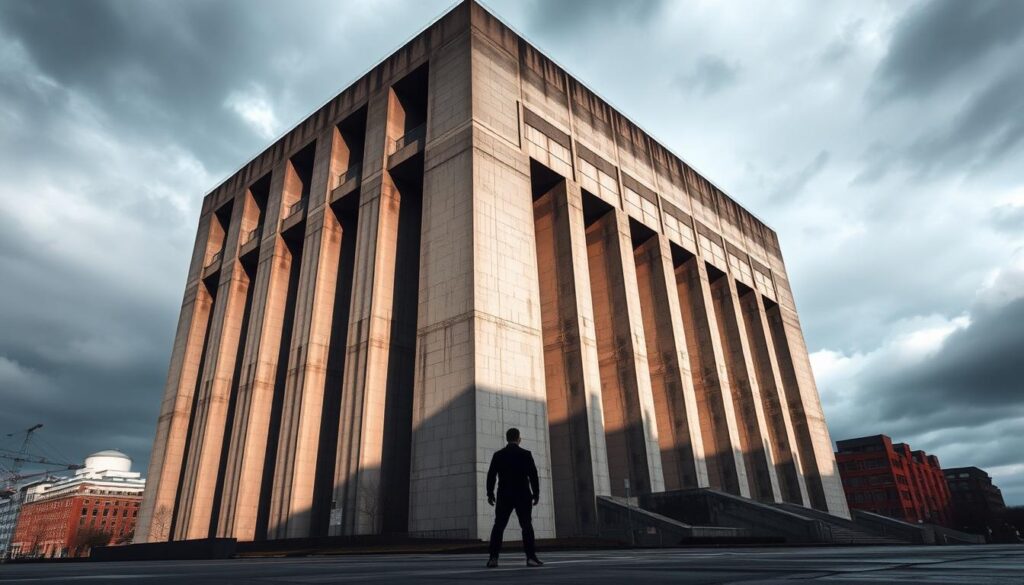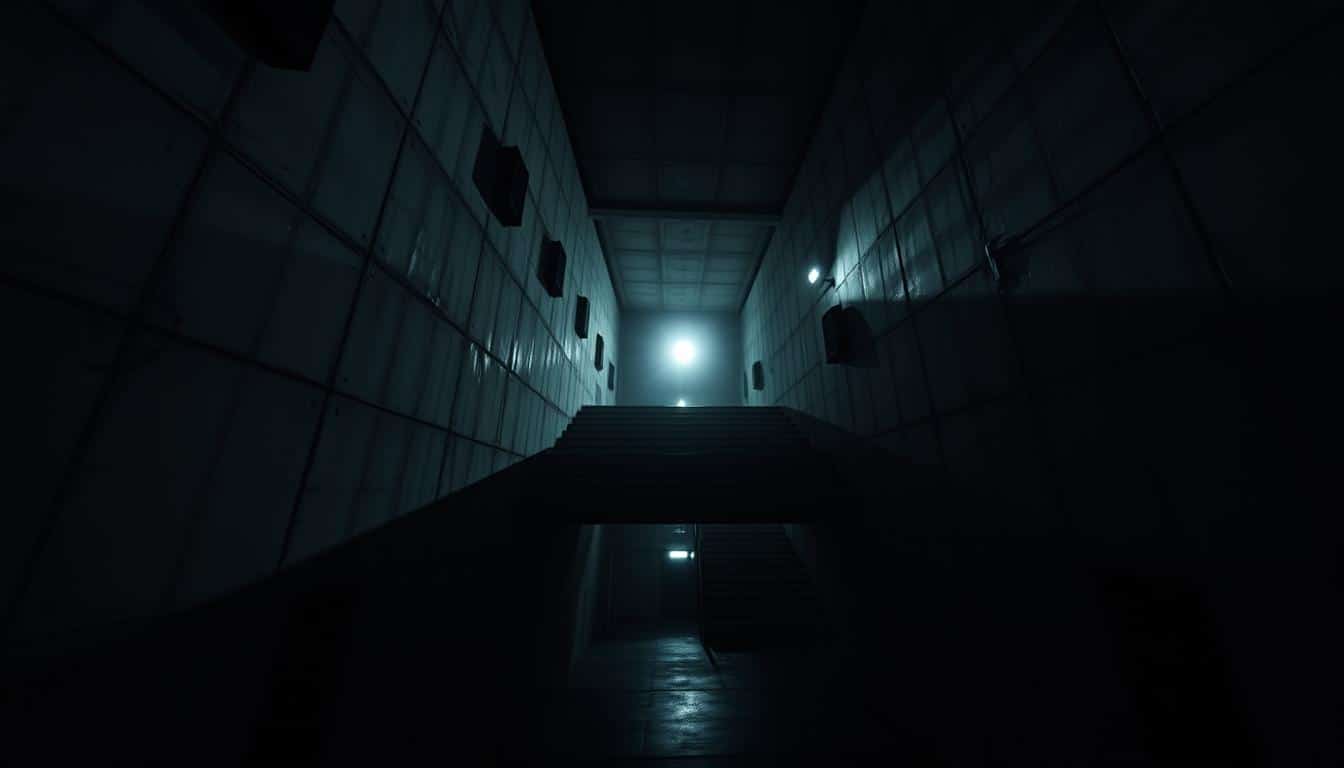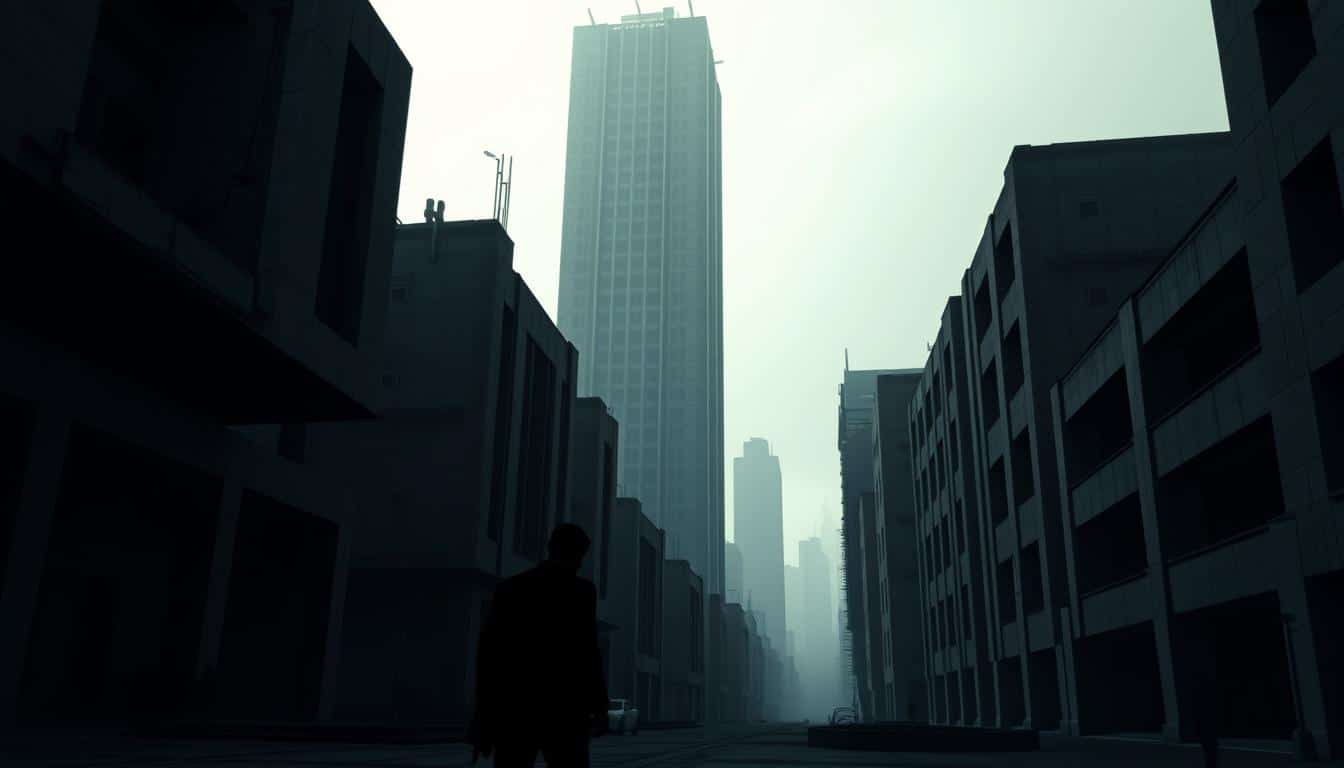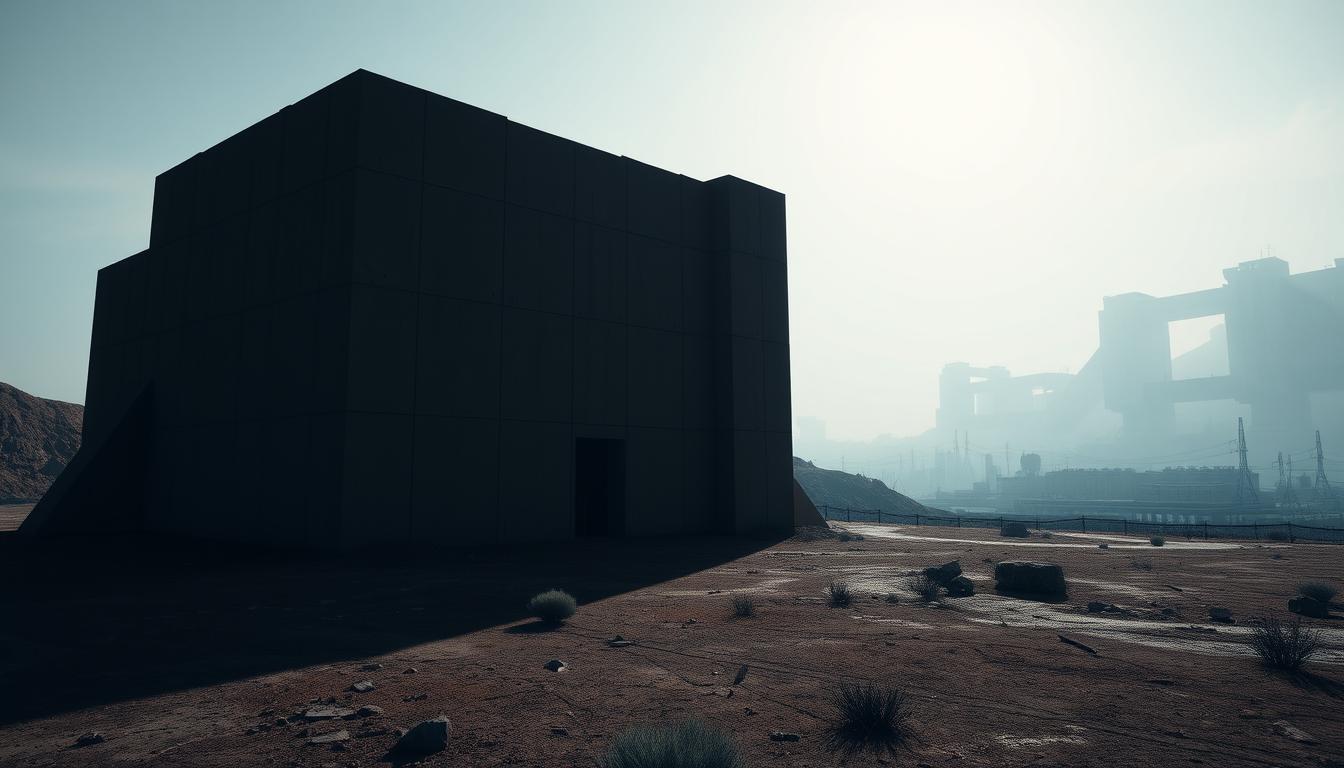Brutalism began in architecture, known for its simple, bold looks and concrete use. Video games have picked up on these designs, bringing brutalist styles into digital worlds. Developers use these ideas to make game environments feel huge and full of feeling, like the big buildings from the mid-1900s.
Gaming uses rough textures and simple visuals to make players feel alone or in awe. This explores how brutalism went from real buildings to shaping stories and looks in video games. It shows how video games change with new design inspirations.
The Origins of Brutalism in Architecture
Brutalism started in the late 1940s, after World War II. It aimed for cost-effective building methods. This style was a shift from the fancy designs of the past. It cared more about function and the bold look of materials. The French architect Le Corbusier was key. He made béton brut, or raw concrete, popular as a main material for building.
This style focused on showing materials as they are, without extra decorations. By showing the structure of buildings, architects wanted to showcase strength and purpose. This matched the post-war desire for modernization and rebuilding. It led to a practical way of thinking about design.
The effect of history on brutalism is important. After the war, the look of buildings changed. Brutalism offered new ideas that were budget-friendly and looked good. It even started to show up in other areas like video game design. This new way of thinking set the stage for using brutalist ideas in many places.

Defining Characteristics of Brutalist Design
Brutalist design stands out with its characteristics of brutalism. It focuses on raw and practical shapes. Architects use bold geometries and rough surfaces to show the raw beauty of materials. This style is different from traditional ones that like decorations and softness. Brutalism lets its structures show their use plainly.
In the world of minimalist architecture, brutalism is unique. It uses clean lines and little detail to keep things honest. Even though it’s bold, brutalism skips extra decorations. It relies on the power of its shape and materials. Brutalism is also linked to Deconstructivism and Structural Expressionism. This shows its commitment to being new and different.
Brutalist design has a big impact on design elements in video games. Simple, clear structures make game worlds look great and feel deeper. By bringing players into worlds built on brutalist principles, game makers offer a special experience. This experience sticks with players.
The Emergence of Brutalism in Post-War Reconstruction
After World War II, cities needed rebuilding. Brutalism stepped in as a popular style for this task. It offered a cost-effective, simple way to rebuild. Cities required new housing, schools, and public buildings quickly. The focus was on functionality and making a bold statement.
Brutalist buildings showcased raw concrete and straightforward shapes. This made fast construction possible during the rebuild. The style wasn’t just about meeting needs. It also symbolized hope and resilience. It helped revive cities ruined by war, blending social and aesthetic goals.
The post-war era’s socio-economic conditions helped Brutalism flourish. As cities aimed to redefine themselves, Brutalist architecture made a strong statement about the future. It balanced practical needs with architectural beauty. This time was key in changing urban design, impacting many areas, including video games.
Brutalist Aesthetics: A Blend of Function and Form
Brutalism combines function and form in a unique way. It uses minimalism and exposes raw materials and structural truth. This approach highlights the building’s or space’s true utility. In architecture and video games, brutalism offers a deep, immersive experience.
Modern games draw players in with brutalist design, creating a deep bond with the game world. This form and function mix elevates gameplay to more than just playing. Stark geometric shapes and wide-open spaces create a powerful atmosphere. It’s similar to the feeling you get from brutalist architecture. These elements make gamers’ experiences deeply engaging, sticking to brutalist design’s main ideas.
The Influence of Brutalism on Game Design
The way buildings look can really change how we feel about games. The style called Brutalism, known for its simple and industrial look, helps make game worlds feel real and engaging. Game makers use this style to make stories more powerful, making players feel like they’re part of the game’s world.
Brutalism makes games feel more intense because of its bold and simple designs. Games like “NaissanceE” and “Control” show how Brutalism can tell a story. The use of concrete and big structures pulls players into the game, making them want to explore more and connect with the story.
By using building designs in games, the visuals get better, and the games become more fun to play. As game designers keep experimenting, Brutalism is key for making memorable game experiences.
Significant Titles in the History of Brutalism Related to Video Games
Many video games have embraced brutalist design, showing how architecture influences gameplay and stories. Games like NaissanceE and Control show the strong link between buildings and game experiences. They take players into worlds that stir deep feelings, thanks to their design choices.
NaissanceE: A Case Study in Virtual Brutalism
NaissanceE is a standout example of brutalism in games. It drops players into a minimalist world of sharp colors and huge, daunting spaces. The game’s design follows brutalist standards, making a setting perfect for deep game exploration. Its design makes players feel curious and thoughtful as they move through large areas.
Control: The Integration of Brutalist Architecture
Control deeply infuses brutalist architecture into its essence. The game’s key location, the Oldest House, shows how design can reflect control and watchfulness. This impressive building isn’t just a setting; it shapes the gameplay, affecting how players face challenges. The way Control is designed makes players feel alone and small, mirroring brutalist art’s core themes.
How Brutalism Creates Emotional Atmospheres in Gaming
Brutalist architecture shapes emotions in video games uniquely. Its huge, raw concrete structures can awe or scare players. As players move through these spaces, they feel more connected to the game.
Sound adds to the Brutalist game world. Echoes in big hallways or spaces make gamers feel alone or in awe. These sounds mix with the look of the game to deeply affect players.
Sharp lighting and simple décor also boost Brutalist spaces’ mood. Game makers use these designs to shape how players feel. This shows how Brutalist style deeply affects gaming experiences.
The Relationship Between Brutalism and Liminal Spaces
Liminal spaces and brutalist architecture share an interesting link. They both make you feel a bit lost and uncertain. Liminal spaces are all about the in-between moments. They show us a unique view of the world. Brutalist buildings can feel both known and strange, pulling you into their space.
The Power of Scale and Structure
How big something is can really draw you into a game. Huge, towering buildings make you feel small. This feeling makes you see your surroundings in a new light. It also sparks your curiosity, making you want to explore more.
The mix of big sizes and design grabs your emotions, making the game more intense. Understanding this mix makes the game more enjoyable. It also shows the creativity behind brutalism in games.
Contemporary Interpretations of Brutalism in Gaming
In modern game design, Brutalism is being rediscovered. Developers give it new life that fits today’s tastes. Games now both honor Brutalism’s bare beauty and use new tech to make playing better. They mix the old Brutalism with new architectural ideas.
Games now have raw concrete looks and simple structures. This challenges old gaming rules. Players dive into worlds that make them think and wonder. They connect deeply with these spaces. Brutalism’s comeback in games shows its strong impact on different game types.
The way games are made keeps changing, with Brutalist designs playing a big part. Developers use these designs to make stories more gripping. Players get to move through thought-stirring places. This mix of old and new creates important conversations about design and how we enjoy games. It makes gamers keep exploring this exciting gaming universe.
Conclusion
Exploring brutalism in video games shows its huge influence and importance. Known for its stark, raw look, brutalism has moved beyond its roots. It has become key in making game environments and stories more engaging. By adding brutalism, video games make players feel more involved. They also offer a unique setting that enhances gameplay.
The future looks bright for design in gaming, thanks to brutalist ideas. Developers are starting to see how simple, functional spaces can touch players emotionally. We can look forward to new games that use this style to create deeper experiences. Brutalism in gaming encourages new ways of thinking about what virtual worlds can be.
In the end, brutalism proves that looks matter more than we might think in video games. They aren’t just for show; they help tell the story and make the game better for players. This style will surely shape future games, leading to new ideas and creative ways to interact in the gaming world.



